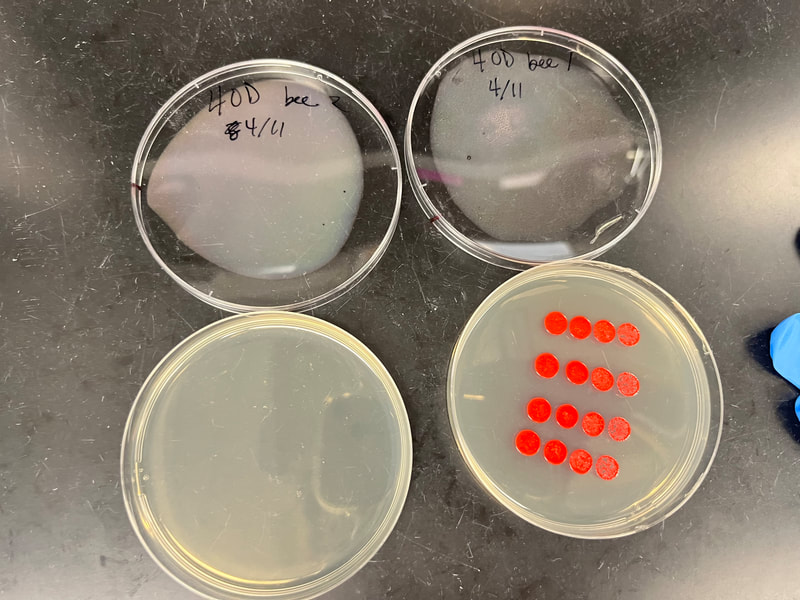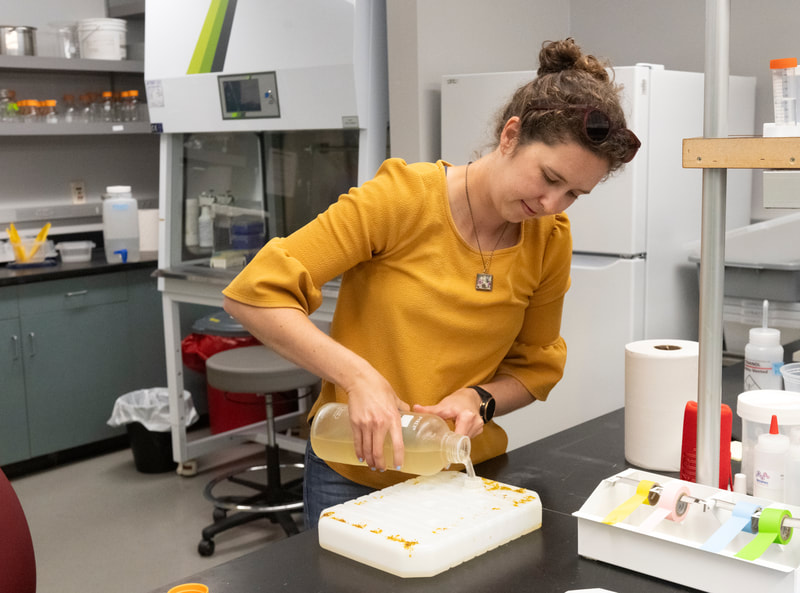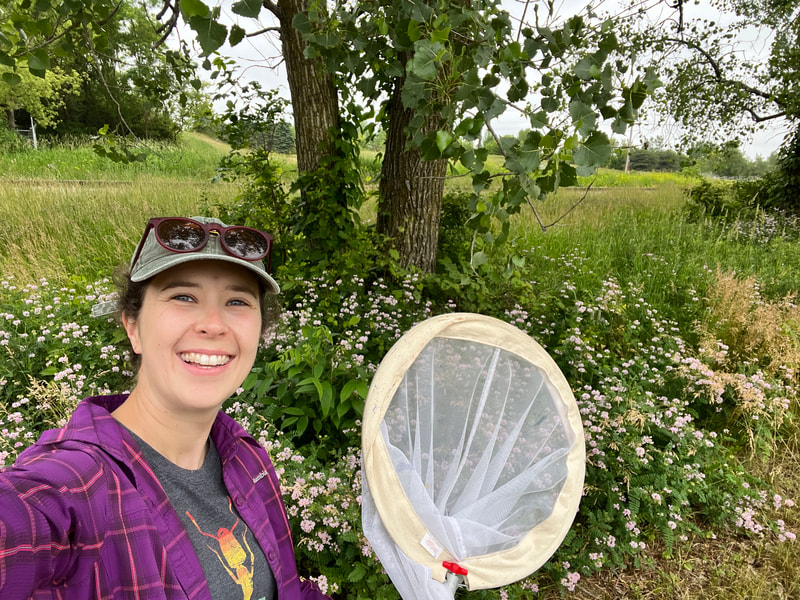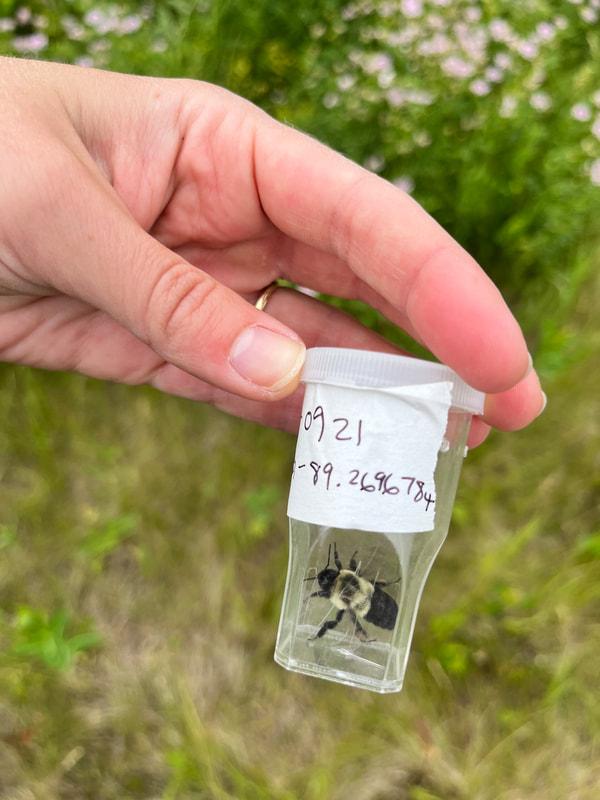Can we use ecological theory to design and deploy probiotics for bumble bees?
Pollination is vital for food production, yet key pollinators, including bumble bees, are declining at alarming rates. To stop these declines, we must find ways to promote bumble bee health. One promising approach is to improve gut microbiome functionality using probiotics. The bumble bee gut microbiome includes five common core bacterial species, which provide a number of benefits to bee health, as well as variable mixtures of non-core species. Composition of these bacterial species, and strains within them, varies extensively among bumble bees. Yet how this variation impacts host function—and whether it can be leveraged to support bumble bee health—are unknown. As a USDA NIFA Postdoctoral Fellow, I aim to develop probiotics to promote the health and pollination services of managed bumble bees. To do so, I am currently conducting a series of lab experiments using tools and concepts from microbial ecology, biodiversity-ecosystem function theory, and metagenomics. This research will improve understanding of how microbes shape the health of a critical group of pollinators and pave the way for ecologically informed design of future probiotics, in both bees and other host organisms.
What factors influence bumble bee susceptibility to pathogens?
Infection by pathogens is a major threat to bumble bee health and the pollination services that they provide. Pathogens can be widely spread among among individuals, colonies, and species of bumble bees, yet observed rates of infection are highly variable. To develop strategies for preventing pathogen infection, it is therefore important to better understand the sources of this variability and when bees are most vulnerable. Currently, I am conducting a series of laboratory experiments to examine the role of worker age, the gut microbiome, and environmental stressors (e.g., temperature) in shaping vulnerability to common bumble bee pathogens (e.g., Serratia marcescens and Crithidia bombi). This research will improve our understanding of how to begin to develop methods to prevent bumble bee infection with pathogens in the future.




